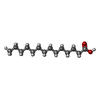+検索条件
-Structure paper
| タイトル | 3.3 A cryo-EM structure of a nonenveloped virus reveals a priming mechanism for cell entry. |
|---|---|
| ジャーナル・号・ページ | Cell, Vol. 141, Issue 3, Page 472-482, Year 2010 |
| 掲載日 | 2010年4月30日 |
 著者 著者 | Xing Zhang / Lei Jin / Qin Fang / Wong H Hui / Z Hong Zhou /  |
| PubMed 要旨 | To achieve cell entry, many nonenveloped viruses must transform from a dormant to a primed state. In contrast to the membrane fusion mechanism of enveloped viruses (e.g., influenza virus), this ...To achieve cell entry, many nonenveloped viruses must transform from a dormant to a primed state. In contrast to the membrane fusion mechanism of enveloped viruses (e.g., influenza virus), this membrane penetration mechanism is poorly understood. Here, using single-particle cryo-electron microscopy, we report a 3.3 A structure of the primed, infectious subvirion particle of aquareovirus. The density map reveals side-chain densities of all types of amino acids (except glycine), enabling construction of a full-atom model of the viral particle. Our structure and biochemical results show that priming involves autocleavage of the membrane penetration protein and suggest that Lys84 and Glu76 may facilitate this autocleavage in a nucleophilic attack. We observe a myristoyl group, covalently linked to the N terminus of the penetration protein and embedded in a hydrophobic pocket. These results suggest a well-orchestrated process of nonenveloped virus entry involving autocleavage of the penetration protein prior to exposure of its membrane-insertion finger. |
 リンク リンク |  Cell / Cell /  PubMed:20398923 / PubMed:20398923 /  PubMed Central PubMed Central |
| 手法 | EM (単粒子) |
| 解像度 | 3.3 Å |
| 構造データ | |
| 化合物 |  ChemComp-MYR: |
| 由来 |
|
 キーワード キーワード | VIRUS / Non-enveloped virus / Membrane penetration protein / Autocleavage / Myristol Group / Icosahedral virus |
 ムービー
ムービー コントローラー
コントローラー 構造ビューア
構造ビューア 万見文献について
万見文献について





 grass carp reovirus (ウイルス)
grass carp reovirus (ウイルス)